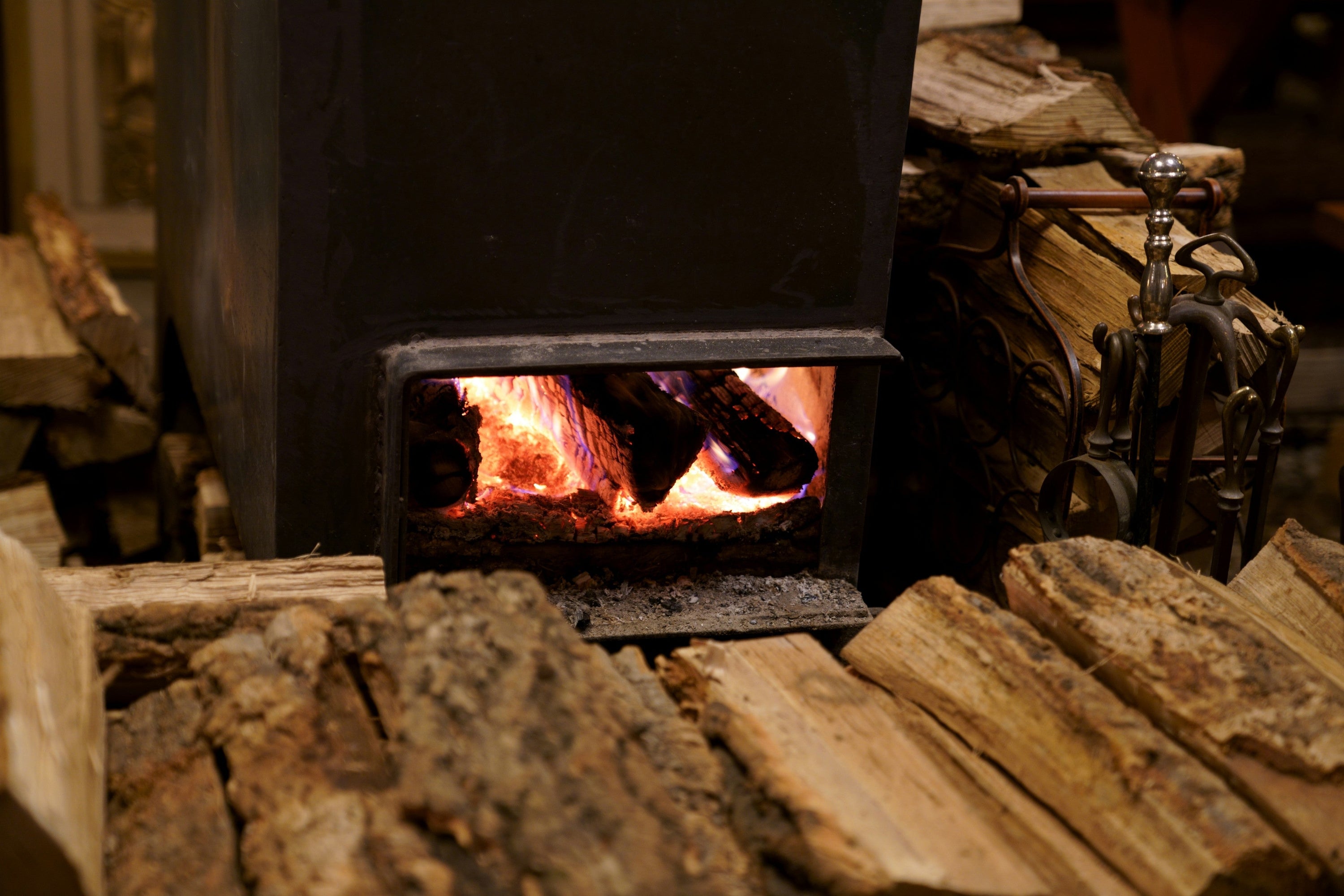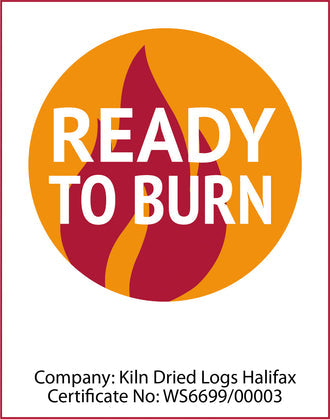
Wood Burner vs Natural Gas Fire: Energy Bills Saving Tips
Why Wood Heating Is Making a Comeback
The resurgence of wood heating systems represents more than just a nostalgic return to traditional methods. With energy bills soaring and environmental consciousness growing, savvy homeowners are discovering that modern wood burning technology offers compelling advantages over conventional gas heating. The wood burner vs gas fire debate has shifted dramatically as advanced wood stove designs, combined with properly prepared fuel, deliver exceptional efficiency and substantial cost savings.
Today's wood burning systems bear little resemblance to the smoky, inefficient fireplaces of previous generations. Contemporary wood stoves achieve remarkable efficiency ratings while providing the independence from utility companies that appeals to an increasing number of households. Understanding the technical advantages and practical benefits of wood heating can help you make an informed decision that reduces your energy bills while enhancing your home's comfort and value.

Technical Advantages of Modern Wood Burning Systems
Superior Heat Output and Efficiency
Modern wood stoves have revolutionized home heating through advanced combustion technology that extracts maximum energy from each log. High-efficiency wood burners achieve 75-85% efficiency ratings by utilizing secondary combustion chambers that burn volatile gases released during primary combustion. This sophisticated process generates significantly more heat per unit of fuel compared to traditional open fireplaces, which typically lose 80% of their heat up the chimney.
The thermal mass principle gives wood stoves a distinct advantage over gas fires in sustained heat delivery. Cast iron and steel construction materials absorb and slowly release heat for hours after the fire dies down, creating consistent warmth without constant fuel consumption. This thermal battery effect means a properly loaded wood stove can maintain comfortable temperatures overnight, something gas fires cannot achieve without continuous operation.
Environmental Benefits of Quality Wood Fuel
The environmental profile of wood heating has improved dramatically with the availability of properly prepared fuel. Is dried wood better for environment? The answer is definitively yes. Kiln-dried logs with moisture content below 20% burn cleaner and hotter than traditional air-dried wood, producing up to 50% fewer emissions while generating 25% more heat per log.
Quality kiln-dried wood undergoes controlled drying processes that eliminate excess moisture and concentrate combustible materials. This preparation results in complete combustion that minimizes particulate matter and eliminates the creosote buildup associated with burning wet or green wood. The environmental advantages extend to carbon neutrality, as sustainably sourced wood represents stored solar energy that releases only the CO2 originally absorbed during tree growth.

Economic Advantages Over Gas Heating
Wood burning vs gas fireplace environment costs reveal significant long-term advantages for wood heating systems. While natural gas prices fluctuate with global energy markets and distribution costs, wood fuel prices remain relatively stable and locally controlled. Many regions offer abundant wood resources that keep fuel costs predictable, unlike gas prices subject to international supply chain disruptions.
The independence factor provides additional economic benefits. Wood stove owners control their fuel sourcing, storage, and consumption without monthly utility bills or supply interruptions. This energy security becomes particularly valuable during extreme weather events when gas supplies may be curtailed or prices spike dramatically.
Choosing Quality Wood Fuel: The Foundation of Efficient Heating
Understanding Kiln-Dried Wood Benefits
The fuel quality revolution in wood heating centers on kiln-dried logs that transform ordinary wood into premium heating fuel. Professional kiln-drying processes reduce moisture content to optimal levels while eliminating insects, fungi, and other contaminants that compromise burning efficiency. The controlled drying environment ensures consistent quality that air-dried wood cannot match.
Kiln-dried logs ignite faster, burn hotter, and produce more heat per pound compared to traditional seasoned wood. The reduced moisture content means more energy goes toward heating your home rather than evaporating water, resulting in cleaner burning and higher efficiency. This translates directly into reduced wood consumption and lower heating costs throughout the season.
Selecting the Right Wood Species
Different hardwood species offer varying heat outputs and burning characteristics that affect overall system performance. Oak, ash, and beech provide excellent heat output with long burn times, making them ideal for overnight heating. Birch offers quick ignition and intense heat, perfect for rapid room warming. Understanding these characteristics helps optimize your wood selection for different heating needs.
Quality suppliers like kiln-driedlogs.co.uk offer detailed specifications for heat output, moisture content, and burning characteristics of different wood species. This transparency allows homeowners to select optimal fuel combinations for their specific heating requirements and stove capabilities.

Energy Bills Saving Tips for Wood Heating Systems
Operational Efficiency Strategies
Maximizing wood stove efficiency requires understanding proper loading techniques, air control management, and burn cycle timing. Load logs loosely to allow adequate airflow while maintaining sufficient fuel mass for extended burns. Operating wood stoves at moderate temperatures (300-400°C) achieves optimal efficiency while preventing overheating that wastes fuel.
Timing heating cycles to match your daily schedule maximizes comfort while minimizing wood consumption. Start fires 30-60 minutes before peak heating needs and allow thermal mass to maintain temperatures during occupancy periods. This strategy can reduce wood consumption by 20-30% compared to continuous burning.
Fuel Cost Management
Strategic fuel purchasing significantly impacts annual heating costs. Buying kiln-dried logs in bulk during off-season periods typically offers 15-25% cost savings compared to small quantity purchases. Proper storage in covered, well-ventilated areas maintains fuel quality while extending usable life.
Calculate your seasonal wood requirements based on home size, insulation levels, and local climate conditions. Most homes require 2-5 cords of quality hardwood per heating season, depending on wood stove efficiency and supplemental heating sources. Accurate planning prevents emergency purchases at premium prices during peak demand periods.
System Optimization Techniques
Regular maintenance keeps wood stoves operating at peak efficiency throughout the heating season. Monthly cleaning of air intake controls and weekly ash removal maintain optimal combustion conditions. Annual professional chimney cleaning ensures proper draft while preventing dangerous creosote buildup.
Installing chimney fans or draft inductors can improve performance in homes with inadequate natural draft. These devices increase combustion air flow while improving smoke evacuation, particularly beneficial for installations in tightly sealed modern homes.
Cost Analysis: Gas Stove vs Wood Stove Economics
Installation and Setup Costs
Wood stove installations typically require higher initial investment compared to gas fires, but this cost difference diminishes when considering long-term operational savings. Professional installation costs range from £1,200-3,000 including chimney work, hearth construction, and safety clearances. However, wood stoves often increase property values more than gas fires, partially offsetting installation expenses.
Gas fire installations cost £800-2,000 but require ongoing utility connections and potential gas line upgrades. The seemingly lower initial cost can be misleading when factoring in monthly connection fees and fluctuating fuel prices over the system's lifespan.
Long-Term Operating Economics
Annual heating costs favor wood systems significantly when quality fuel is used efficiently. Kiln-dried hardwood costing £120-180 per cord typically provides equivalent heating to £300-500 worth of natural gas, depending on regional pricing. These savings compound annually, often recovering installation cost differences within 3-5 years.
The durability advantage of wood stoves extends economic benefits over decades. Quality cast iron wood stoves often operate effectively for 25-30 years with minimal maintenance, while gas fires typically require component replacement every 10-15 years. This longevity factor significantly improves wood heating's total cost of ownership.
Safety and Environmental Considerations
Modern Wood Burning Safety Standards
Contemporary wood stoves incorporate advanced safety features that address traditional concerns about wood heating. Automatic combustion air controls prevent overheating while maintaining optimal burn temperatures. Triple-wall chimney systems and proper clearance requirements virtually eliminate fire hazards when professionally installed.
The key to safe wood burning lies in using quality fuel and following proper operating procedures. Kiln-dried logs burn cleaner and more predictably than traditional wood, reducing the risk of chimney fires or incomplete combustion that creates dangerous conditions.
Environmental Responsibility
Responsible wood heating practices contribute positively to environmental goals when implemented correctly. Using sustainably sourced, properly prepared fuel ensures carbon neutrality while supporting local forestry management practices. Quality kiln-dried logs from certified suppliers provide traceability and environmental accountability that fossil fuels cannot match.
Modern EPA-certified wood stoves produce minimal emissions when operated with appropriate fuel. The combination of advanced stove technology and premium kiln-dried wood achieves cleaner burning than many conventional heating systems while providing renewable energy independence.
Frequently Asked Questions
Is dried wood better for environment compared to green wood?
Is dried wood better for environment? Absolutely. Properly seasoned wood with moisture content below 20% burns more completely, producing significantly fewer particulate emissions and toxic compounds compared to green or wet wood. Seasoned wood generates approximately 25% more heat per log while producing 75% fewer emissions. The seasoning process, typically requiring 6-18 months depending on wood species and storage conditions, allows moisture to evaporate while concentrating combustible materials for cleaner burning.
Which system lasts longer: gas stove vs wood stove?
Gas stove vs wood stove longevity depends on construction quality, maintenance practices, and usage patterns. High-quality cast iron wood stoves typically operate effectively for 20-30 years with proper maintenance, while steel models average 15-20 years. The simple mechanical design of wood stoves means fewer components that can fail over time.
Can wood burning actually reduce my heating bills?
Wood burning can substantially reduce heating bills when implemented strategically with access to affordable wood sources. Households with abundant local wood supplies often achieve 50-70% heating cost reductions compared to electric or oil heating systems. However, savings depend heavily on local fuel prices, wood availability, and current heating system efficiency.
Calculate potential savings by comparing current heating costs against estimated wood expenses including purchase price, delivery fees, and storage requirements. Factor in additional costs like chimney maintenance, ash disposal, and increased homeowners insurance premiums that some providers require for wood stove installations.
Do gas fires provide enough heat for whole-house heating?
Most residential gas fires function best as supplemental or zone heating solutions rather than primary whole-house systems. Standard gas fires produce 20,000-60,000 BTU/hour, adequate for heating 800-2000 square feet depending on insulation quality and climate conditions. Larger homes typically require multiple gas fires or integration with existing heating systems.
Conclusion: The Wood Heating Advantage
The evidence strongly favors wood heating systems for homeowners seeking cost-effective, environmentally responsible, and reliable heating solutions. Modern wood stoves combined with quality kiln-dried fuel offer compelling advantages over gas heating in efficiency, economics, and energy independence. The superior heat output, sustained warmth delivery, and predictable fuel costs make wood heating an increasingly attractive option for discerning homeowners.
The key to success lies in selecting quality equipment, using properly prepared fuel, and following professional installation and maintenance practices. When these elements align, wood heating systems provide decades of comfortable, cost-effective home heating while supporting environmental sustainability goals.
Consider exploring quality kiln-dried wood options from established suppliers who understand the technical requirements for optimal wood heating performance. The investment in premium fuel pays dividends through improved efficiency, reduced maintenance, and enhanced heating experience that makes wood burning the preferred choice for many households.
Share
